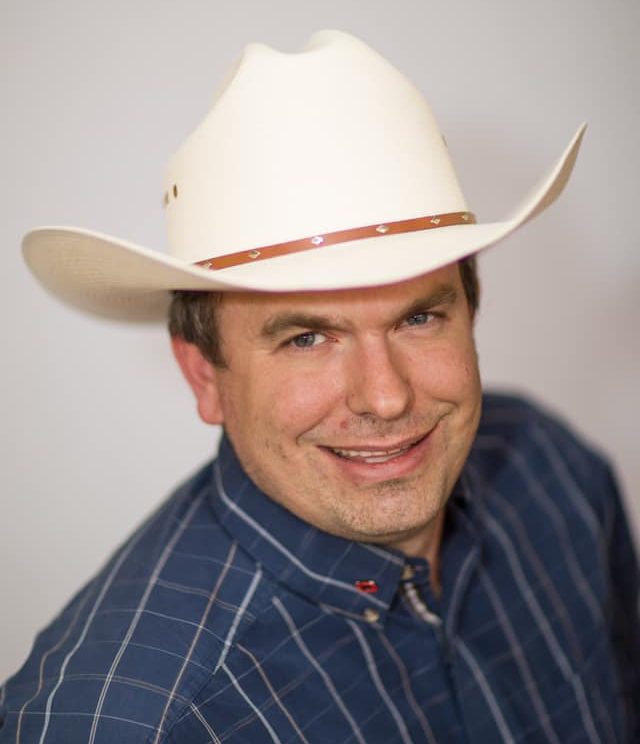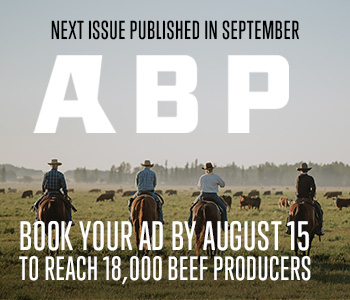AB Direct - Steers
Rail: 495.00-500.00 del
AB Direct - Heifers
Rail: 495.00-500.00 del
US Trade- Steers
Rail: ---
US Trade - Heifers
Rail: ---
Canadian Dollar
0.12
Help Wanted: Veterinarians and vet technologists in short supply
In 2018, Dr. Pat Burrage sold his veterinarian practice in Bluffton, Alberta to a young vet, thinking he would have a lot more time to spend with his family. He also thought he would find more time to talk to the Angus Cross and Longhorn herds on his farm just west of the central Alberta community.

However, that was not meant to be for the President of the Alberta Veterinary Medical Association.
A growing shortage of veterinarians in the province created the need for him to help in the short term at the Lethbridge Animal Clinic, which provides services to Feedlot Health owned by Telus Agriculture.
It started in January 2019, a month after he ‘retired to the farm.’ He figured he could do the work and be back in time for calving. Two years later that short-term job is still ongoing and is keeping him on the road. Lethbridge is approximately 430 kilometres from Bluffton, a four-and-a-half-hour drive. Dr. Burrage enjoys the work, but his thoughts are often at home, where his eldest daughter Erin and her husband Randy manage the herd.
“As a small town vet, you’re the electrician of animals, you’re the mechanic of animals,” Burrage says. He speaks with a lot of pride about his time as a vet in Bluffton. Saying it is an honour being there for the community when their livestock, dog, cat and even the odd iguana needed to be treated.
He says he was able to manage the workload and the herd on the farm, because of his three daughters who helped with the livestock while they were growing up.
The current shortage of veterinarians in the province has been talked about a lot lately, but the issue has been going on for some time.
The cause? Burrage says in the last 10 years, the population of the country has grown exponentially and as a result, so has the number of companion pets, such as dogs and cats, which a rural vet needs to keep up with, on top of the 400 to 500 cow-calf clients they may have. At the same time, the profession is seeing the same number of graduates every year that it was 30 years ago.
The problem is also not limited to rural, but urban as well.
Burrage says that it’s not enough to replace the vets who are retiring, but falls short of what they need in order to keep up with the demand.
In this episode of The Bovine, ABP Chair Dr. Melanie Wowk talks to host Debra Murphy about the veterinary shortage.
“What we haven’t done very well from the education side is produce vets at a pace that competes with the population growth.”
This puts a lot of pressure on vets and vet technologists, who are also in short supply, and their support networks.
There are many who are putting in a lot of overtime, to make sure their client’s livestock and pets are taken care of in a timely manner.
COVID-19 has also added to the problem, as everyone is forced to extend appointments a little longer to ensure health and safety protocols are carried out to keep everyone safe.
Work has been underway in recent years to remedy the problem. Burrage says they have been collecting data and have been in ongoing discussions with post-secondary schools such as the University of Calgary’s Veterinary Medicine program and government, who are both very aware of the issue.
Both sides are working on short- and long-term solutions.
Increasing the number of vets isn’t the only issue the industry is facing. Retaining them is also top of mind. Burrage calls it ‘leaky bucket syndrome.’
“They keep falling through the cracks.”
He says a considerable amount of time and energy is being invested to find ways to keep both vets and vet technologists in the industry. Every veterinarian practice is hoping to land a post-secondary graduate or two from the 2022 class to help deal with the demand.
Speaking of education, he is a big proponent of mobilizing vet technologists to do more by teaching the skills needed to handle jobs the vets normally do, something some practices have done really well.
“We need to get better at what we do with the resources that we have.”
Burrage says the changes we are seeing in the livestock industry now are happening much faster than they would have 10 years ago.
While he still thoroughly enjoys his work, he is hopeful the day will come soon when a young vet will come in and take his place.
For now, Burrage says he will keep on, keeping on. Supporting the industry until it can get back up on its feet.
At which point he will have more time to talk to his cows.
This article was first published in Volume 2 Issue 1 of ABP Magazine (January 2022). Watch for more digital content from the magazine on ABP Daily.


